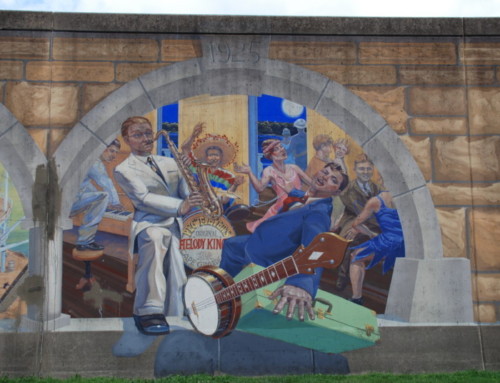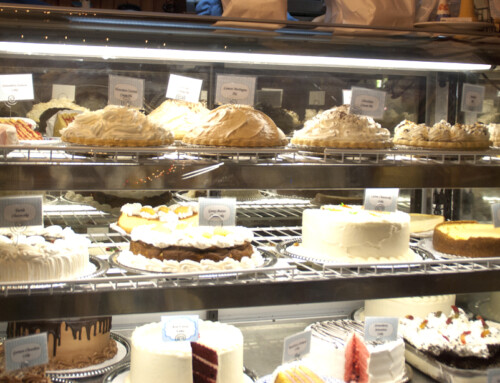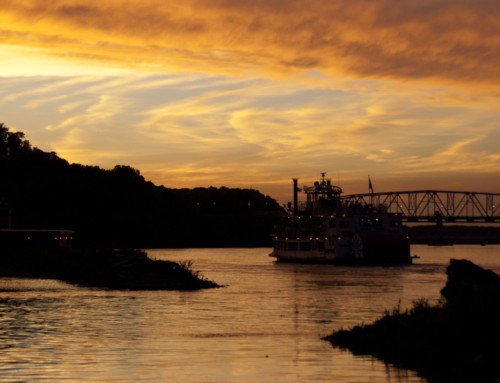Introduction
“First in booze, first in shoes, and last in the American League.”
Those last place Browns are long gone, as are the shoe factories, but we still have the booze and a National League baseball team that is a perennial contender. St. Louis, my hometown, is great place to live and full of diversions for visitors.
You’ll find a lot to see and do along the Great River Road through St. Louis, but there is much more to explore throughout the region. St. Louis has a rich and diverse history, fun festivals, and great food. And maybe best of all, visiting St. Louis is easy on the wallet. Many of the top attractions are free, and the stuff you have to pay for is quite affordable.
This guide will introduce you to the attractions along the river corridor, but there’s much more to experience throughout the region.
The Communities
From the thirty square blocks next to the Mississippi River laid out by Pierre Laclède in 1764, St. Louis has sprawled to over 8,600 square miles. The heart of the region—the City of St. Louis—is an independent city; it separated from St. Louis County in 1877. This is why you’ll hear folks talk about about “The City” or “The County;” they are separate government units that may someday kiss and make up.
Divided government is kinda our thing, anyway. St. Louis County has 88 distinct municipalities governing a population of about one million residents. Clayton is the seat of county government, and among its wealthiest enclaves. The county boundaries wrap around The City like a c-clamp, which makes it easier to categorize folks geographically and socially as north, west, and south countians. In addition to The County, new housing developments have sprawled far to the west and south. St. Charles County has nearly 400,000 residents living on cul-de-sacs near the old French village of St. Charles. To the south, Jefferson County has about 225,000 residents.
The east side of the metro area is growing, too, although it’s a more recent phenomenon fueled by new bridges that make the commute a little easier. Along the Mississippi, most of the communities started as company towns, meaning a single company basically founded the town and controlled the local government to ensure favorable treatment. These communities have struggled as those companies have cut back or closed. Suburban tracts have sprung up the Metro East region in places like Fairview Heights, Columbia, Waterloo, and even Belleville.
Rivers define the region, though. The Missouri River ends its journey north of St. Louis and forms part of the boundary between St. Louis and St. Charles Counties. The Meramec River divides St. Louis County from Jefferson County. The Mississippi River, of course, separates Missouri from Illinois.
As much as I’d love to tell you all about these wildly different places, my thing is limited to the Mississippi River, so this guide only includes profiles for communities along the Mississippi River in the St. Louis region. They are:
In Missouri
- Kampville
- Orchard Farm
- Portage des Sioux
- West Alton
- Spanish Lake
- St. Louis City
- Lemay
- Oakville
In Illinois
Highlights
St. Louis has much to enjoy, but there are a few things that stand out:
- The Confluence of the two largest rivers in North America, the Mississippi and Missouri (see St. Louis and Hartford, Illinois)
- The Old Chain of Rocks Bridge (see Madison, Illinois)
- The Gateway Arch, of course! Don’t miss the museum, the Old Courthouse, and the Old Cathedral (see St. Louis)
- The City Museum (see St. Louis)
- Forest Park (see St. Louis)
- The mosaic art at the Cathedral Basilica of Saint Louis (see St. Louis)
- Free stuff! Many museums and cultural sites offer free admission (see St. Louis)
- Cardinals baseball or Blues hockey (see below)
- Cahokia Mounds State Historic Site
- The French colonial Holy Family Church (see Cahokia, Illinois)
Route Overview
If you want to drive a loop tour on the Great River Road, I recommend a route bounded by the Chain of Rocks Bridge (I-270) in the north and the Jefferson Barracks Bridge (I-255) to the south. The entire loop is about forty miles.
On the Missouri Side
- Head south on Riverview Boulevard from Interstate 270
- Follow Riverview Boulevard south to County Road H, aka Hall Street
- Turn left at the light onto Hall Street and drive until it ends at Grand Boulevard
- Turn right on Grand, then turn left on Broadway. Follow Broadway all the way until it leaves the city limits (eleven miles) and becomes Kingston Road, then Telegraph Road in St. Louis County and intersects Interstate 255
- Take I-255 east across the Jefferson Barracks Bridge into Illinois; four miles after entering I-255 east it becomes I-255 north
On the Illinois Side
The official route is outlined below. As an alternative, you could follow Illinois Route 3 all the way back to Interstate 270, which would take you through the old eastside industrial corridor north of East St. Louis (whose towns are profiled above). Neither route is all that scenic, and you won’t see much of the river either way.
- From Interstate 255 north, take exit 10 to Illinois Highway 3 north toward Cahokia/East St. Louis; stay on it for 6 ½ miles until it merges with Interstate 55
- Once on Interstate 55, if you follow the signed Great River Road, you will follow I-55 North for six miles to Exit 6, then go north on Illinois Highway 111 toward Pontoon Beach
- Follow Illinois Highway 111 north for 7 ½ miles to Interstate 270
- Take Interstate 270 westbound back across the river to St. Louis
River Crossings
Bridges! We have eight bridges across the Mississippi River in St. Louis. Here are the river crossings from Interstate 270 in the northern part of the region to Interstate 255 in the southern part of the region:
- The uninspiring new Chain of Rocks Bridge, which opened in 1966, carries Interstate 270; it connects north St. Louis County to Granite City, Illinois.
- The old Chain of Rocks Bridge opened in 1929 and served as a river crossing for Route 66 for many years. The 30-degree turn mid-river no doubt induced white knuckles for many drivers, especially if a truck was coming from the other direction. The bridge closed to auto traffic in 1968 and sat abandoned for decades, a magnet for crime but also for a few scenes in the movie Escape from New York. In 1999, the bridge reopened for pedestrians and bicyclists, thanks to a massive effort led by the group Trailnet.
- The McKinley Bridge, built in 1910, connects Salisbury Street in St. Louis to Illinois Highway 3 at Venice, Illinois. It was named for William Brown McKinley, who was president of the Terminal Railroad Association when the bridge was built.
- The newest river bridge is officially known as the Stan Musial Veterans Memorial Bridge, but the “Stan Span” is catching on. The cable-stayed suspension bridge opened in 2014 to carry Interstate 70 between St. Louis and St. Clair County, Illinois.
- The Martin Luther King Memorial Bridge between St. Louis and East St. Louis opened in 1951 as the Veterans Memorial Bridge; it was renamed in 1972. On the East St. Louis side, the King Bridge connects with St. Clair Avenue/Illinois Highway 3 north, Interstate 64, Interstate 55, US Highway 40 and ML King Drive. From downtown St. Louis, the bridge is accessed from Convention Plaza.
- The historic Eads Bridge which opened in 1874. It connects Washington Avenue in downtown St. Louis with River Park Drive in East St. Louis near the Casino Queen.
- The Poplar Street Bridge (PSB), another modern bore, which opened in 1967. It is officially called the Bernard F. Dickman Memorial Bridge but nobody calls it that. The PSB is the interstate highway bridge for Interstates 64 and 55 and connects St. Louis and East St. Louis. Unless you have a lot of time to burn, avoid the westbound Poplar Street Bridge approaches during the morning rush and the eastbound approaches during the evening rush.
- The two spans of the Jefferson Barracks bridge opened in 1983 (westbound) and 1992 (eastbound). The bridges both use a steel arch construction in which the road deck is suspended from the superstructure on steel cables. They carry traffic for Interstate 255 between south St. Louis County and Monroe County, Illinois.
Visitor Information
Visitors can load up on brochures and information with help from the folks at Explore St. Louis; they have five staff info centers around town, including one at the Gateway Arch and one in each terminal at Lambert International Airport (by baggage claim).
Disclosure: This website may be compensated for linking to other sites or for sales of products we link to.
Festivals
Like any big city, St. Louis throws a lot of good parties throughout the year. Below are a few you might want to check out.
A lot of people are surprised when they learn that St. Louis has one of the best-attended Mardi Gras parades in the country, especially since February in St. Louis isn’t the optimal time of year for an outdoor parade. Still, the grand parade on the Saturday before Fat Tuesday draws a big crowd, as does the pet parade on the Sunday before the grand parade. If you want to visit during Mardi Gras, book a room early and bring plenty of patience.
The Ancient Order of Hibernians sponsors a popular St. Patrick’s Day Parade through the city’s Dogtown neighborhood on St. Patrick’s Day.
The Missouri Botanical Garden (4344 Shaw Blvd.; 314.577.5100) hosts the Whitaker Music Festival on Wednesday evenings in summer (concerts begin at 7pm, with free entry to the garden beginning at 5pm). It’s a great opportunity to hear some of the best musicians in the area play, and it’s free. You can even bring food and drinks into the garden to enjoy the festival (just don’t bring glass).
The annual Shakespeare Festival takes place in Forest Park on a hill near the Art Museum (6604 Fine Arts Dr.). The company generally stages one of the Bard’s plays for most of June, with shows every night but Tuesday; a preview show begins at 6:30 with the full performance beginning at 8.
St. Louis hosts PrideFest the last full weekend in June, another big festival downtown that draws 300,000 or more people. The big event is the parade on Sunday, which steps out at noon.
Looking for yet another excuse to hang out with tens of thousands of your favorite people? Fair St. Louis is the city’s annual Fourth of July party. It begins a couple of days before the 4th and draws big-name musicians to the Arch grounds. The party culminates each night with a fireworks display back-dropped by the Arch.
The Saint Louis Art Fair features the work of artists selected from a competitive group of applicants. The fair takes place in downtown Clayton the weekend after Labor Day.
Regional Attractions
Here are a few regional attractions you may want to explore:
Laumeier Sculpture Park (12580 Rott Rd.; 314.615.5278) hosts permanent and temporary installations.
For a big-picture perspective on the many ways that we’ve invented to get around, spend a couple of hours at the National Museum of Transportation (2933 Barrett Station Rd.; 314.965.6212); the collection of railroad cars is worth the visit alone.
The Busch family estate is the site of a popular attraction known as Grant’s Farm (10501 Gravois Rd.; 314.843.1700), which is located on farm once owned by the 18th President. The site includes a petting zoo, a tour through a park with exotic animals like zebras and bison, US Grant’s restored cabin, and a beer garden. Fun for the whole family!
As long as you’re in the area, stop by the Ulysses S. Grant National Historic Site (7400 Grant Rd.; 314.842.1867). The site preserves, White Haven, the family home of Grant’s wife, Julia Dent. Grant met Dent at White Haven in the early 1840s when he was stationed at Jefferson Barracks; they lived in the house for a few years in the 1850s.
Six Flags St. Louis (4900 Six Flags Rd.; 636.938.5300) is the area’s major theme park; it is about thirty miles southwest of downtown St. Louis in Eureka, Missouri.
The St. Louis region has five casinos; two are in St. Louis City and one is in East St. Louis. The other two are:
- Ameristar Casino Resort & Spa in St. Charles (1 Ameristar Blvd; 800.325.7777)
- Hollywood Casino in Maryland Heights (777 Casino Center Dr.; 800.855.4263)
For a taste of life as a local, take in a St. Louis Cardinals baseball game at Busch Stadium or a St. Louis Blues hockey game at the Enterprise Arena, both downtown.
Arriving
By Air
St. Louis Lambert International Airport is located northwest of downtown; it takes 20-30 minutes to drive from the airport to downtown or just a little longer via the MetroLink light rail services (there are stations at both Terminal 1 and Terminal 2).
By Train
Sure, St. Louis has a big airport, but you can also get there by train. Amtrak offers daily service to Chicago and Kansas City. The downtown station is at the Gateway Transportation Center (430 S. 15th St.), which is a little hard to find; it’s under the elevated highway at 15th and Poplar Streets.
By Bus
St. Louis is also served by Greyhound/Burlington Trailways buses; they pick up passengers at the same station downtown where Amtrak has gates (the Gateway Transportation Center, 430 S. 15th St.). You can purchase tickets in advance. If that’s not enough, Megabus also has service to and from St. Louis from the same transit center. You must buy tickets in advance through their website.
By Car
There are many major highways that connect to the St. Louis. If you have trouble finding one, ask Siri.
Getting Around
You’ll probably end up using your car to explore St. Louis. In spite of what you might hear from folks around town, traffic isn’t that bad. If you drive on an interstate during rush hour, then you might not be able to travel at the speed of light, so just give yourself a little time buffer.
If you want to ditch your car, St. Louis has an expanding light rail system and decent bus routes, plus both Uber and Lyft operate in St. Louis.
Bicycle Routes
St. Louis has a growing network of designated cycling routes. In the city, the Mississippi River Greenway runs from the Arch to the Old Chain of Rocks Bridge. Check with Great Rivers Greenway for a list of routes around the region. If you didn’t bring a bike, you can find bike or scooter to rent at many locations around town. Find out more at St. Louis Bike Share.
Light Rail
MetroLink is the local light rail system. Red line trains run from St. Louis Lambert Airport (with stops at both Terminals 1 and 2) to the University of Missouri-St. Louis and downtown, cross the river on the Eads Bridge to East St. Louis, then continue on to Belleville, Illinois and Scott Air Force Base. The blue line runs from Fairview Heights, Illinois, to Shrewsbury, with stops in downtown Clayton and at Washington University. The two lines split at the Forest Park-DeBaliviere station. If you are taking it the Arch, exit at the Laclede’s Landing station.
Local Bus
MetroBus operates multiple public bus routes throughout the city. Check out the TripPlanner feature on their website if you’re looking for options on getting from point to point.
Dining Tips
St. Louis is a big city, so there’s no shortage of good places to eat. To read about the latest in St. Louis dining, pick up a copy of Sauce Magazine.
Beer. When you think of St. Louis and beer, you might think of Budweiser, but the beer scene has grown far beyond the place with the Clydesdales. St. Louis now counts over 30 craft breweries. The Schlafly Tap Room (2100 Locust St.; 314.241.2337) started it all when they opened in 1991, and they’re still a great option. Other popular places include the neighborhood-based Civil Life (3714 Holt Ave.), the German influenced beers of Urban Chestnut Brewing Company (check out their big beer hall at 4465 Manchester Ave.), 4 Hands Brewing Company (1220 S. 8th St.; 314.436.1559), and the Belgian-style beers at Perennial Artisan Ales (8125 Michigan Ave.; 314.631.7300).
St. Louis food specialties include toasted ravioli (which are deep fried and delicious), gooey butter cake (which is as good as it sounds; get at a sample at one of the Park Avenue Coffee locations), concretes (frozen custard worth every minute of the wait at Ted Drewes: 6726 Chippewa St.; 314.481.2652), and pork steaks (which you won’t see on many menus).
St. Louis also has its own style of pizza: a cracker-thin crust with a sweet tomato sauce that is topped with Provel cheese, a local invention that is a processed cheese made from a combination of Swiss, cheddar, and provolone. If you grew up in St. Louis, you love it. If you didn’t, you probably won’t be impressed. If you want to give it a try, you could go to one of the Imo’s Pizza location, the local chain that specializes in it, or try a better version at Lou Boccardi’s (5424 Magnolia Ave.; 314.647.1151).
If that St. Louis-style pizza doesn’t sound all that appealing, don’t fret—there are many great options. Head to the Black Thorn Pub (3735 Wyoming St.; 314.776.0534), a neighborhood tavern that offers deep dish to thin crust.
If you’re game to try food you won’t find anywhere else, get a St. Paul sandwich—basically egg foo young on white bread with mayo and lettuce. You’ll find it in many of the city’s chop suey joints, but Mai Lee (Brentwood: 8396 Musick Memorial Dr.; 314.645.2835) makes an especially good one.
For a hearty meal, try a slinger, which usually starts with chili, eggs, and a hamburger piked on top of hash browns and often grows from there. I like the versions at Chili Macs Diner downtown (510 Pine St.; 314.421.9040) and the Southwest Diner (6803 Southwest Ave.; 314.260.7244).
St. Louis is in the midst of a barbecue boom, which is a good thing. Pappy’s Smokehouse (3106 Olive St.; 314.535.4340) started the trend, but there are many other good options in the area, including Bogart’s Smokehouse in the Soulard neighborhood (1627 S. 9th St.; 314.621.3107).
We’re pretty big on donuts, too. World’s Fair Donuts (1904 S. Vandeventer Ave.; 314.776.9975) is a long-time favorite. Vincent Van Doughnut (1072 Tower Grove Ave.; 314.339.5440) offers a modern twist on the donut concept.
We’ve got a whole bunch of great sandwich shops. Blues City Deli (2438 McNair Ave.; 314.773.8225) serves hearty po’ boys and muffulettas. Union Loafers (1629 Tower Grove Ave.; 314.833.6111) specialized in artisan sandwiches on fresh bread. The Gramophone (4243 Manchester Ave.; 314.531.5700), a self-described sandwich pub, offers a crazy number of options. Adriana’s (5101 Shaw Ave.; 314.773.3833) specializes in Italian-themed sandwiches.
Lodging Tips
I don’t generally include listings for chain hotels; you can find your favorite brand without my help. I put my time into finding independently-owned lodging options, like bed-and-breakfasts or small motels/hotels. If you don’t see anything you like on these pages, try a service like Airbnb to rent a room, a house, or an apartment.
© Dean Klinkenberg, 2018,2022
Community-supported writing
If you like the content at the Mississippi Valley Traveler, please consider showing your support by making a one-time contribution or by subscribing through Patreon. Book sales don’t fully cover my costs, and I don’t have deep corporate pockets bankrolling my work. I’m a freelance writer bringing you stories about life along the Mississippi River. I need your help to keep this going. Every dollar you contribute makes it possible for me to continue sharing stories about America’s Greatest River!




